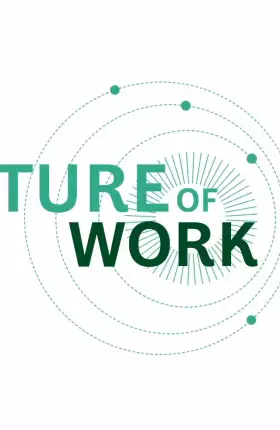Why BCG?
We have developed an integrated approach that enables companies to understand how to prepare for the future of work, expand their thinking from the tactical to the strategic, and redefine the way work gets done.
Transforming the Workplace of the Future to Make Work Really Work
We have an opportunity to create a future of work that is more engaging, productive, and humane. Find out how we can stop contorting our lives around work—and instead reshape work to work better for everyone.
Video
October 22, 2021
Three Tips for Leaders to Get the Future of Work Right
With the cultural shift sparked by the pandemic, BCG managing director & senior partner Debbie Lovich gives three essential tips so leaders can reinforce autonomy, let go of rigid corporate bureaucracy, and reshape work to better fit the lives of all employees.

Slideshow
February 13, 2024
Retention is a complex issue unique to each company, but research suggests a universal solution: doubling down on employee joy.

Research shows intense stress is one of the primary reasons working parents consider quitting their jobs. Organizations need to respond in three core areas.
Returning to the Office or Site
As companies bring employees back to the workplace, it’s tempting to revert to old work models. But doing so would be a missed opportunity to redesign work for the way it should be—not the way it used to be.
Video
October 9, 2023
Architecting the Future of Work
There is compelling evidence that shows employees can be just as productive working without the former constraints of time and location. Business leaders have the opportunity and imperative to intentionally design the future of work to unleash a new wave of productivity.

If leaders have been paying attention, they should now appreciate the fact that different employees need different settings to perform at their best.

Slideshow
October 19, 2023
BCG’s latest global employer survey reveals that finding and keeping employees are among the top reasons that organizations are supporting new workforce initiatives.

Interview
August 21, 2023
A conversation on the future of work with work, technology, and organizations expert, author, and Harvard Business School professor Tsedal Neeley.
Enabling Hybrid Working Models
The question facing many employers is how to create the right models for hybrid working—models that preserve the benefits of remote and flexible work while recapturing the energy of in-person interactions—without unintentionally creating new frictions and inequities.

Slideshow
August 15, 2023
Understanding what enables employees to do their best work is essential to finding the right kind of flexibility.

There are five prerequisites for hybrid work to work successfully. How do you measure up?

Hybrid working models can get messy. Companies must establish principles to focus the organization on behavior change—and put guardrails in place to avoid creating inequitable experiences.
Winning the Competition for Talent
One in five knowledge workers is likely to jump to a new company in the next year, and more than half are open to looking for a new position. Meanwhile, companies are rethinking their talent models—including what a “job” looks like. This is about to be the fiercest race for talent we’ve ever seen.
To keep up with a rapidly evolving job market, hiring practices must also change. BCG managing director and partner Nithya Vaduganathan shares how to cultivate an inclusive work culture, inspire productivity, and unleash talent hiding in plain sight.

Report
May 10, 2023
Employers underestimate how many PwD work for them, so they are missing opportunities to improve inclusion and retention. Here’s how they can do better.

Article
May 3, 2023
More than half of US parents need better care options for their children. Governments, employers, providers, and philanthropies can all help.

Managers with great people skills act as organizational glue, binding employees to their jobs and work. The opposite kind of manager chases people away.
Understanding Trends in Jobs and Skills
Companies that understand which jobs are growing and which are disappearing—as well as which skills are increasingly in demand and which are becoming obsolete—will gain a significant advantage over competitors.

Article
August 5, 2025
Redesigning work to ensure that employees are supported, motivated, and empowered can be both an enabler and result of AI adoption.
Video
The Do-It-for-Me Era of AI
Citi’s Sophia Bantanidis and BCG’s Karen Lellouche Tordjman explore agentic AI’s potential and the centrality of humans in making it work.
Video
September 19, 2024
GenAI and Employee Joy
Yes, GenAI can improve productivity, but to be really effective it must also help employees enjoy their work, argues BCG’s Deborah Lovich.

Article
June 8, 2022
Companies take three key actions to find talent in new and hidden places.
Transforming the Operating Model
Companies are transforming their operating models to enable faster innovation and adaptation using agile at scale, AI at scale, and new ways of working. The best way to redesign an operating model in the postpandemic era? Boldly and quickly.
Video
Two Focus Areas in a Company’s AI Journey
AI as a personal assistant is powerful. The next frontier is using AI to make entire processes more efficient, says Microsoft’s Jared Spataro.

Article
April 7, 2021
Why do digital natives grow into the world’s most valuable companies seemingly overnight while the world’s largest legacy companies achieve only incremental digital progress?
BCG’s Partners in the Future of Work
- BCG has been a founding partner of the Future Forum, a Slack-backed consortium that helps companies thrive in a digital-first world.
- In partnership with LightCast, a leading provider of real-time labor market information, BCG has analyzed 95 million jobs and skills. We use that knowledge, in combination with interviews and in-depth employee surveys, to help clients answer a key question: What is the future of work?
- BCG collaborates with Faethm, a company specializing in AI and analytics, to model the effects of new technologies on jobs and determine how the supply and demand for individual types of jobs will change.
- BCG has also collaborated with the Harvard Business School’s Project on Managing the Future of Work to pursue research that business and policy leaders can put into action as they navigate the changing nature of work.
- In cooperation with the World Economic Forum's Future of Work project, BCG has developed a blueprint to help companies assess and manage changes and challenges in the future of work.
Meet BCG’s Future of Work Consulting Team















